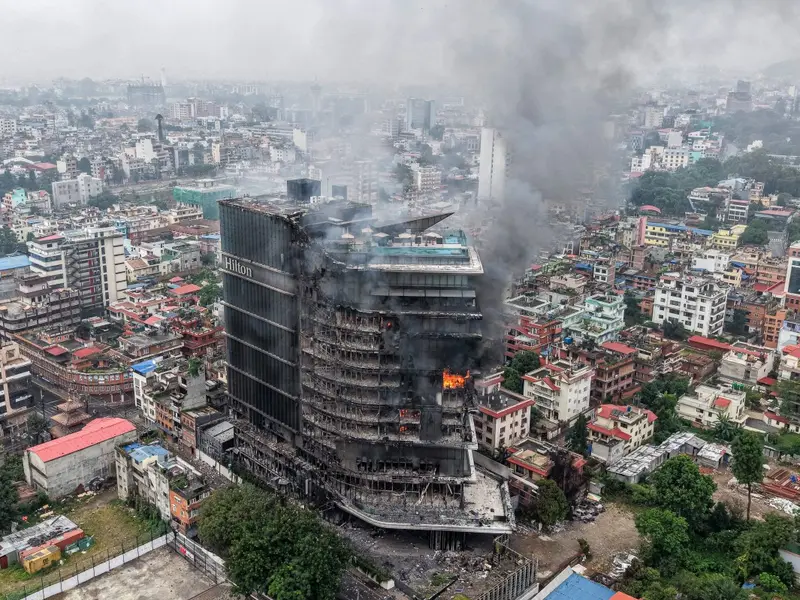Nepal has been gripped by some of its most violent protests in recent history, as a wave of disillusioned Gen Z demonstrators stormed the national parliament and forced Prime Minister KP Sharma Oli to resign. What began as an anti-government movement quickly expanded into a broader backlash against symbols of privilege and wealth: luxury hotels, high-rise buildings, and elite residences became flashpoints of public rage.
Several landmark establishments were torched or damaged, including the Hilton Kathmandu, the Hyatt Regency near the sacred Boudhanath Stupa, and the Varnabas Museum Hotel. According to Bhushan Rane, front-office manager at the Hyatt Regency, rioters inflicted property damage but no staff or guests were injured. The hotel has suspended operations indefinitely.

The Hilton, a glass-fronted skyscraper inaugurated only last year by industrial heir Shahil Agrawal, also confirmed in a statement that it had evacuated all visitors safely and would close temporarily while assessing losses. Meanwhile, the Varnabas Museum Hotel—owned by sitting lawmaker Rajendra Bajgain of the Nepali Congress—was set ablaze. Bajgain resigned from parliament soon afterward and expressed solidarity with the protesters.
The student-led uprising has left at least 34 dead and more than 1,300 injured, underscoring both the scale of unrest and the government’s struggle to contain it. Beyond the political fallout, Nepal’s hospitality and tourism sectors—cornerstones of the national economy—are facing catastrophic losses estimated at over 25 billion Nepalese rupees, with nearly two dozen hotels across the country vandalized, looted, or burned.
This surge of violence highlights a deeper societal fracture: a young generation frustrated with entrenched political elites and widening economic inequality, willing to attack not only state institutions but also the luxury symbols they believe embody systemic injustice.


